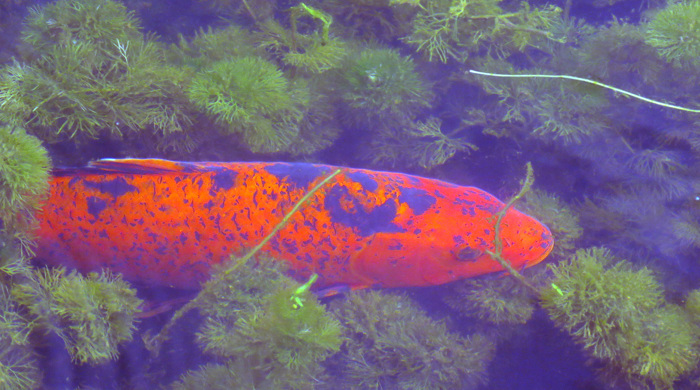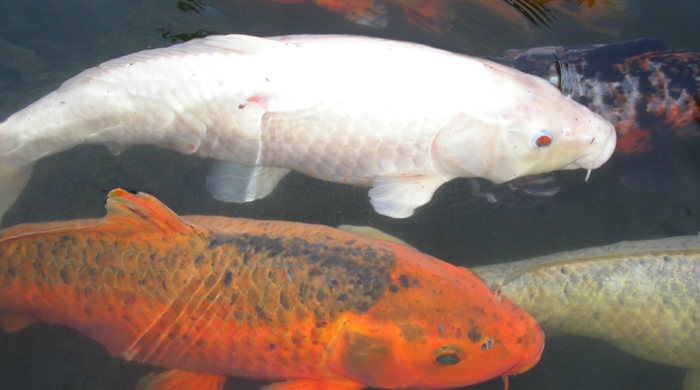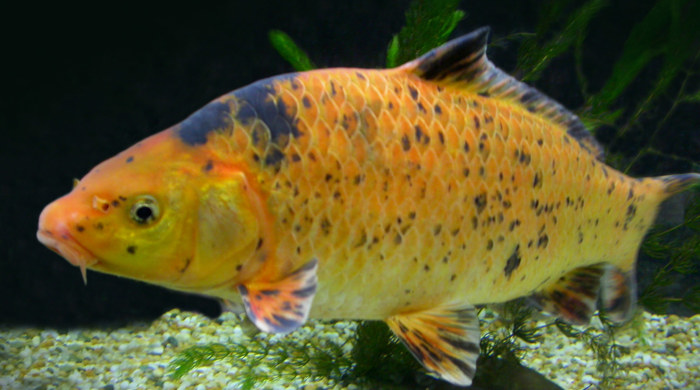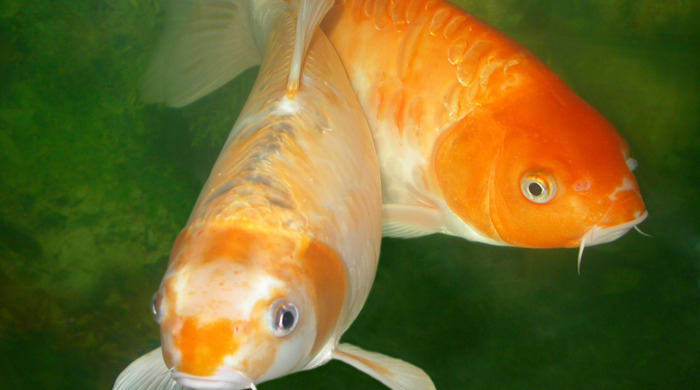Cyprinus carpio / Cyprinus rubrofuscus
Koi / Amur carp
Family: Cyprinidae
Origin: Asia
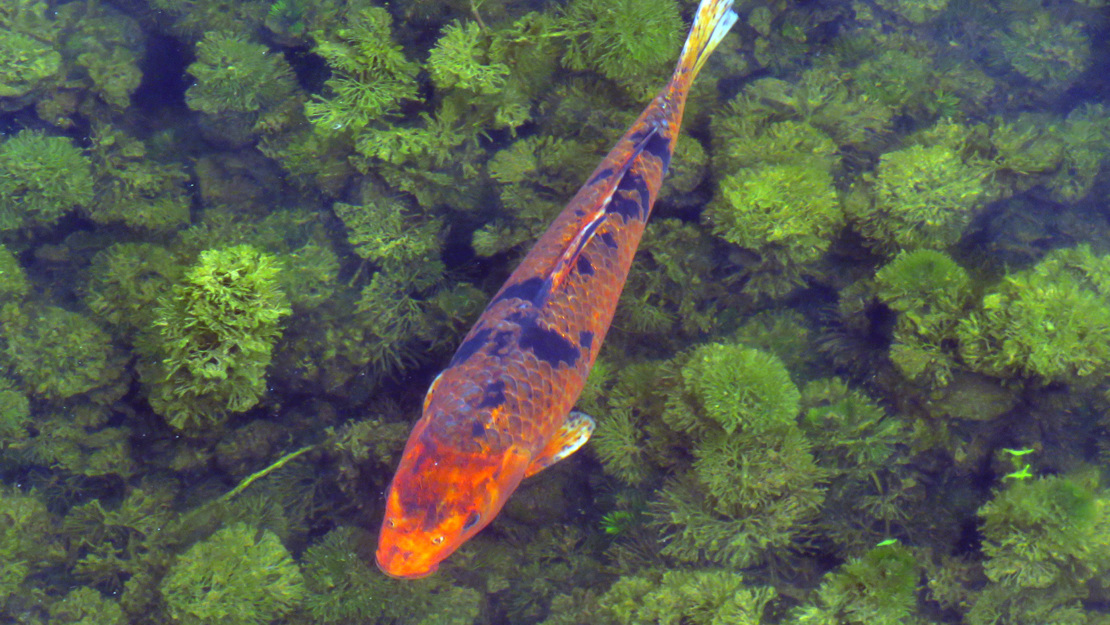
Regional Pest Management Plan (RPMP) status
- Hauraki Gulf Controlled Area Notice pest
- Whole region — Sustained control
- Aotea — Exclusion
- Priority Lakes Tomarata and Rototoa
General description
Koi carp are an ornamental strain of common carp, up to 70 cm long. It has variable colouring and often a blotchy pattern, which can include black, red, orange, white and gold - distinguished by a pair of barbels. Amur carp have also been found in New Zealand and look the same as koi carp.
What you need to know
To help protect our environment:
- You must not distribute or release any koi carp within the Auckland region.
- You must not fish for koi carp in High Conservation Value water bodies or their catchments, or anywhere in the Hauraki Gulf Controlled Area.
Habitats
Benthic habitats, still or slow-moving waterbodies.
Impact on environment
Uproots plants, increases turbidity, modifies habitats, eats invertebrates. Can compete with native waterfowl, fish and kōura for resources. Can cause lakes to flip to alternative state devoid of vegetation, with turbid water dominated by phytoplankton.
Control
Management
Check equipment and vessels for freshwater pests, clean everything that has been in contact with the water and dry everything thoroughly.
For more information about koi and amur carp and how to manage them, please contact Auckland Council at pestfree@aucklandcouncil.govt.nz.
